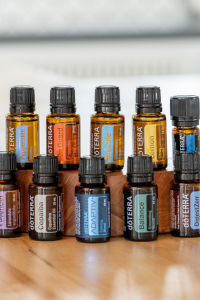The Who, What, When, Where and How of Essential Oils
 Essential oils have exploded on shelves and online. Just about every direct sales company has added them to their offerings. You can find self-care products like shampoos and lotions and cleaning products boasting the addition of essential oils. But when it comes to using essential oils to support your health, exactly what makes essential oils different?
Essential oils have exploded on shelves and online. Just about every direct sales company has added them to their offerings. You can find self-care products like shampoos and lotions and cleaning products boasting the addition of essential oils. But when it comes to using essential oils to support your health, exactly what makes essential oils different?
When looking at essential oils, I have come to understand that so much goes into creating a quality product that I can feel good about using for myself and my family. So let’s get into the who, what, where when and how of essential oils creation.
Let’s start with the WHO; Essential oils have been around for hundreds of years. Growers who have been working with plants have had knowledge and skill passed down for generations. As essential oils’ popularity grew, people began creating farms and industrializing the growing and extraction of plants. As a people person who believes that there is energy in everything we consume, from the coffee we drink to our clothes, knowing who is behind the production of the oils I use is important. I love knowing that using oils is not only good for my health, but my purchases affect other communities around the world. You can learn more about doTERRA ®s co-impact sourcing and the people and communities behind the oils here.
WHAT next is the What. Quality essential oils are so much more than just scent, especially when looking for an essential oil that will benefit and support your body. What I have learned over time is that there may be many species of the same plant. For example, did you know there are over 20 species of Basil? Another example is Frankincense which has about 25 species, each having a different chemical composition, therefore, having a different effect.
Equally as important as species of plant is WHERE they are grown. My favorite example is a lemon. It can be grown in California, Florida, Italy, Spain, India, and many other places. However, just like species, the growing conditions and soil will affect the chemical constituents of the plant and thus the oil that is produced. Last on my list of things that can affect an essential oil is the WHEN. How long a plant remains in the ground and the time of day flowers are picked can affect the amount of oil produced and the potency of the oil. One example is Jasmine. Extracting Jasmine is labor-intensive and must be done at daybreak when the flowers are most fragrant and have the highest percentage of components intact. So when I see a low-priced Jasmine, I can’t help but wonder what I am getting.
Essential oils are true treasures from the earth. They can benefit our mood, soothe discomfort, support clear breathing, support beautiful skin and so much more. There is chemistry behind their effectiveness, so working with a company that looks at all aspects of oil production is crucial to me as a nurse and wellness educator, and why I choose to work with doTERRA ®.
Ready to learn how essential oils can support you on your path to wellness? Let’s talk!
